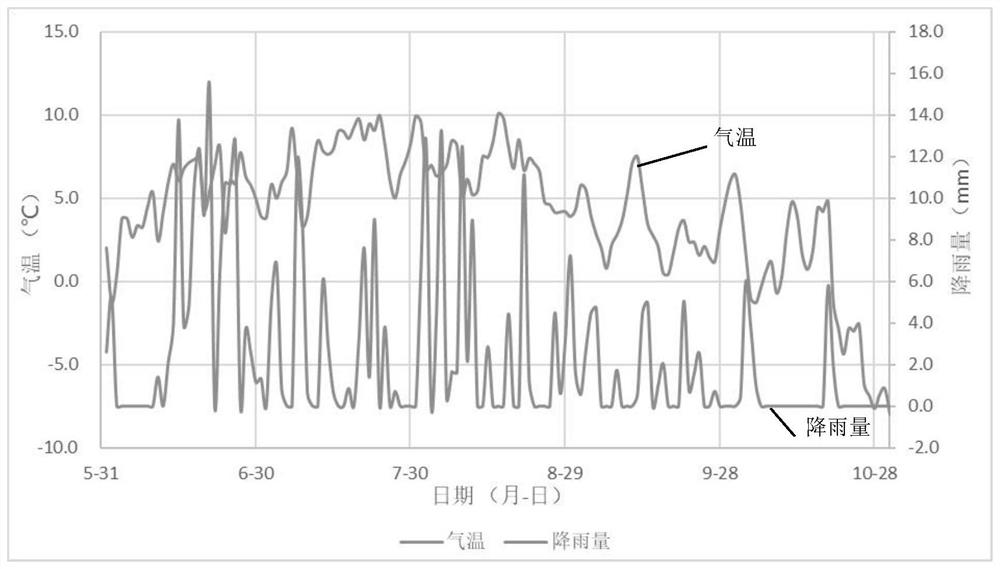Method for increasing near-surface air temperature and shallow soil temperature in frozen soil area
A soil temperature and permafrost area technology, which is applied in the field of increasing the near-surface air temperature and shallow soil temperature in permafrost areas, can solve the problems of complex temperature increasing methods, high construction and operation costs, and large maintenance workload, and achieves the promotion of The development of green mining and circular economy, the early greening period, and the effect of appropriate temperature increase
- Summary
- Abstract
- Description
- Claims
- Application Information
AI Technical Summary
Problems solved by technology
Method used
Image
Examples
Embodiment 1
[0032] Implementation time: July 1, 2021 to September 30, 2021.
[0033] Implementation location: on the right side of mileage 3061 of G109 National Highway in the hinterland of Hoh Xil on the Qinghai-Tibet Plateau, at 34°51′ north latitude, 92°56′ east longitude, and 4,700 meters above sea level.
[0034] Climatic conditions: the present invention is mainly aimed at cold regions such as permafrost regions with insufficient positive accumulated temperature during the growth period and difficult ecological restoration. Starting from June 3, the test site has a continuous daily average temperature above 0°C; on October 4, the daily average temperature began to drop below 0°C. During the test period from July 1 to September 30, 2021, the lowest instantaneous temperature was -4.3°C, the lowest daily average temperature was 0.41°C, the highest instantaneous temperature was 17.1°C, the highest daily average temperature was 10.1°C, and the maximum daily rainfall was 13.2mm. During t...
experiment example 1
[0046] In order to effectively increase the near-surface air temperature and shallow soil temperature, the tailings material used to cover the surface should be dark or black tailings that absorb solar radiation well and have a significant warming effect. In this embodiment, the apparent reflectance of the tailings material to solar radiation is not greater than 10%. The apparent reflectance is directly related to the solar warming effect, the smaller the apparent reflectance, the more significant the radiation warming effect. Considering that the apparent reflectance of common planting soil is generally 25 to 35%, in order to ensure the warming effect of this measure, it should be ensured that the apparent reflectance of the covering layer to solar radiation is not greater than 20% within the design life cycle.
[0047] The thinnest thickness of the tailings covering layer used in the present invention should be able to resist the influence of wind erosion and water erosion, ...
PUM
 Login to View More
Login to View More Abstract
Description
Claims
Application Information
 Login to View More
Login to View More - R&D
- Intellectual Property
- Life Sciences
- Materials
- Tech Scout
- Unparalleled Data Quality
- Higher Quality Content
- 60% Fewer Hallucinations
Browse by: Latest US Patents, China's latest patents, Technical Efficacy Thesaurus, Application Domain, Technology Topic, Popular Technical Reports.
© 2025 PatSnap. All rights reserved.Legal|Privacy policy|Modern Slavery Act Transparency Statement|Sitemap|About US| Contact US: help@patsnap.com



